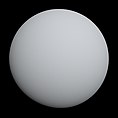HD 212771 b
| Discovery[1] | |
|---|---|
| Discovered by | Johnson et al. |
| Discovery site | Keck Observatory |
| Discovery date | 2010-03-17 |
| Doppler spectroscopy | |
| Orbital characteristics[2] | |
| 1.19±0.13 AU | |
| Eccentricity | 0.076±0.051 |
| 380.7±1.4 d | |
| 2454920±52 JD | |
| 29±65 º | |
| Semi-amplitude | 50.0±5.8 m/s |
| Star | HD 212771 |
| Physical characteristics[2] | |
| Mass | ≥2.39±0.27 MJ |
HD 212771 b is an extrasolar planet orbiting the G-type star HD 212771 approximately 364 light years away[3] in the constellation Aquarius.[1]
Nomenclature
[edit]HD 212771 b is named Victoriapeak. The name was selected in the NameExoWorlds campaign by Hong Kong, during the 100th anniversary of the IAU. It is named after the Victoria Peak, the highest point on Hong Kong Island. The host star HD 212771 is named Lionrock, after the Lion Rock.[4][5]
Properties
[edit]Orbit
[edit]HD 212771 b's orbit period and distance are similar to Earth's, with the values being 380 days and 1.19 AU respectively. It orbits in a nearly perfect circular orbit compared to long period gas giants.
Characteristics
[edit]| Jupiter | HD 212771 / Victoriapeak |
|---|---|

|

|
Due to the unknown orbital parameters, the planets true mass is not known, with a minimum of 2.39 times Jupiter's mass. HD 212771 b's radius is unknown, so NASA's Eyes on Exoplanets gives an estimate of 1.18 times the radius.[6]
See also
[edit]References
[edit]- ^ a b Johnson, John Asher; et al. (2010). "Retired a Stars and Their Companions. IV. Seven Jovian Exoplanets from Keck Observatory". Publications of the Astronomical Society of the Pacific. 122 (892): 701–711. arXiv:1003.3445. Bibcode:2010PASP..122..701J. doi:10.1086/653809.
- ^ a b Luhn, Jacob K.; et al. (2019). "Retired A Stars and Their Companions. VIII. 15 New Planetary Signals around Subgiants and Transit Parameters for California Planet Search Planets with Subgiant Hosts". The Astronomical Journal. 157 (4). 149. arXiv:1811.03043. Bibcode:2019AJ....157..149L. doi:10.3847/1538-3881/aaf5d0. S2CID 102486961.
- ^ Brown, A. G. A.; et al. (2016). "Gaia Data Release 1. Summary of the astrometric, photometric, and survey properties". Astronomy and Astrophysics. 595. A2. arXiv:1609.04172. Bibcode:2016A&A...595A...2G. doi:10.1051/0004-6361/201629512. S2CID 1828208.Gaia Data Release 1 catalog entry
- ^ "Approved names". NameExoworlds. Retrieved 2020-01-02.
- ^ "International Astronomical Union | IAU". www.iau.org. Retrieved 2020-01-02.
- ^ "Eyes On Exoplanets – Exoplanet Exploration: Planets Beyond our Solar System". exoplanets.nasa.gov. Retrieved 2021-06-06.
External links
[edit]
